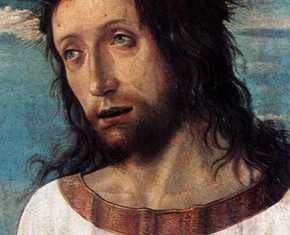The views expressed in our content reflect individual perspectives and do not represent the authoritative views of the Baha'i Faith.
The purpose of the occasion was, according to Shoghi Effendi, to implement the revelation of the Bab by a sudden, complete, and dramatic break with Islam—“with its order, its ecclesiasticism, its traditions, and ceremonials.” – God Passes By, p. 31.
In order to act out this transition metaphorically, Baha’u’llah rented three gardens—one for himself, one for the Bab’s follower Quddus, and a third for the famous Babi poet Tahirih. According to a prearranged plan, Quddus and Tahirih publicly quarreled during the conference, Quddus advocating a conservative view that the followers of the Bab not dissociate themselves from the religion of Islam, and Tahirih asserting that the Babi movement was a new revelation and urging the Babis to break with Islam:
It was Baha’u’llah Who steadily, unerringly, yet unsuspectedly, steered the course of that memorable episode, and it was Baha’u’llah Who brought the meeting to its final and dramatic climax. One day in His presence, when illness had confined Him to bed, Tahirih, regarded as the fair and spotless emblem of chastity and the incarnation of the holy Fatimih, appeared suddenly, adorned yet unveiled, before the assembled companions, seated herself on the right hand of the affrighted and infuriated Quddus, and tearing through her fiery words the veils guarding the sanctity of the ordinances of Islam, sounded the clarion-call, and proclaimed the inauguration, of a new Dispensation. – Ibid., p. 32.
This dramatic event (watch a video on the history of Tahirih and the Conference of Badasht) no doubt had many metaphorical meanings, not the least of which was a transition from one “garden” (Islam) to a completely new “garden” (the Babi revelation). We may also find symbolic value in the fact that Baha’u’llah occupied a third “garden”—possibly a symbol of his own revelation, in the same way that one of the Hidden Words employs a garden image to represent that revelation:
Proclaim unto the children of assurance that within the realms of holiness, nigh unto the celestial paradise, a new garden hath appeared, round which circle the denizens of the realm on high and the immortal dwellers of the exalted paradise. – Baha’u’llah, The Hidden Words, p. 27.
Not all the actions of the messengers of God and their followers are so clearly symbolic or metaphorical, though one can hardly ignore the overall dramatic and metaphorical tenor of the early years of the Baha’i Faith. But, strictly speaking, all the actions of the manifestation demonstrate God’s love for man through dramatic physical expression.
Possibly the most obvious use of metaphor as a teaching device by the messengers is in their use of language. Whether it is in the form of the allegorical myths of the Old Testament, the parables of Christ, or the exquisite poetic imagery of Baha’u’llah’s verses, the language of the prophets relies on figures drawn from the phenomenal world in order to translate abstract concepts into terms that humanity can more readily understand. To render a comparative analysis of the types of imagery used by the successive manifestations would require countless volumes, but several general observations will be sufficient for our purposes to demonstrate how essential metaphor is in the language of these teachers.
As Baha’u’llah explains in The Book of Certitude, the manifestations of God do not always use language that is veiled, allusive, or metaphorical. The type of language they employ depends on the purposes of the work and the exigencies of the situation:
It is evident unto thee that the Birds of Heaven and Doves of Eternity speak a twofold language. One language, the outward language, is devoid of allusions, is unconcealed and unveiled; that it may be a guiding lamp and a beaconing light whereby wayfarers may attain the heights of holiness, and seekers may advance into the realm of eternal reunion. Such are the unveiled traditions and the evident verses already mentioned. The other language is veiled and concealed, so that whatever lieth hidden in the heart of the malevolent may be made manifest and their innermost being be disclosed. . . . In such utterances, the literal meaning, as generally understood by the people, is not what hath been intended. – pp. 254-255.
One illustration of Baha’u’llah’s statement might be the distinction we would make between the language with which the manifestation reveals his laws and the language with which he inspires and explains spiritual verities and attributes.
There are no exact rules about when a prophet will speak metaphorically and when he will not. As we study the Old Testament, we can only guess how literally the followers of Abraham or Moses perceived the anthropomorphic descriptions of God and the physical evidences of His intervention in the lives of the peoples of that day. But two major uses of metaphorical language seem relatively consistent, as in the revelations of Christ, Muhammad, and Baha’u’llah.
One recurring use is the portrayal of spiritual concepts. Christ employed the parable almost exclusively. Like other metaphorical devices, the parable forces the listener to participate, to decide the meaning. But being an extended analogy in the form of a story, the parable has the further advantage of working on various levels with multiple metaphoric equations. It is also able to hold the interest of the audience because on the literal level it contains a dramatic narrative.
Thus while Christ was establishing a degree of intimacy with his audience by telling a literal story that depicts characters and situations familiar to His listeners (a prodigal son, laborers in a vineyard, a merchant discovering a pearl of great worth, sowers of seed), he was also teaching his followers to think abstractly, to escape the literalism of their inherited beliefs, and to understand the spiritual or inner significance of his words. Instead of an elaborate canon of law (though he did reveal an abundance of laws as well), Christ bequeathed to his believers a treasury of memorable stories, each one of which had the capacity to challenge the most humble and the most erudite among his followers. Any seeker, the highest or the lowest, the learned as well as the untutored, could appreciate Christ’s parables in a different way. But those entrapped in their literalism could not penetrate the shell of the metaphorical lesson, neither could they grasp the figurative implications of their own Messianic teachings and thereby recognize Christ as having fulfilled the symbolic prophecies of their own scripture:
Then the disciples came and said to him, “Why do you speak to them in parables?” And he answered them, “To you it has been given to know the secrets of the kingdom of heaven, but to them it has not been given. For to him who has will more be given, and he will have abundance; but from him who has not, even what he has will be taken away. This is why I speak to them in parables, because seeing they do not see, and hearing they do not hear, nor do they understand.” – Mathew 13:10-13.
Christ later told His disciples, “the hour is coming when I shall no longer speak to you in figures but tell you plainly of the Father.” – John 16:25.
Certainly Muhammad fulfills this promise in the Qur’an. He speaks openly and forthrightly about the sequence of prophets God has sent, and about how humankind has rejected each of them. As we mentioned earlier, he also blatantly chastises the Christian clergy who had distorted the teachings of Christ to imply that Christ was God incarnate, stating that Christ was no less divine because he was a prophet or apostle of God and not God Himself.
















Comments
Sign in or create an account
Continue with Googleor